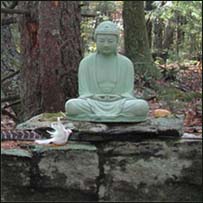|
|
 |
Please support Dharma Seed with a 2025 year-end gift.
Your donations allow us to offer these teachings online to all.

|

|

|
The greatest gift is the
gift of the teachings
|
|

|
| |
|
Dharma Talks
|
2025-06-14
No Exaggeration
1:23:43
|
|
Nathan Glyde
|
|
|
A meditation, reflection, and (just the) responses to questions on the theme of wise perception: knowing this is a dependently originating appearance. And expanding wise and skilful (right) speech to include not exaggerating or simplifying! Perhaps these alongside other ideas, will support our practice to deepen, and widen to help liberate peace into the world.
|
|
Gaia House
:
Online Dharma Hall - June 2025
|
|
|
|
|